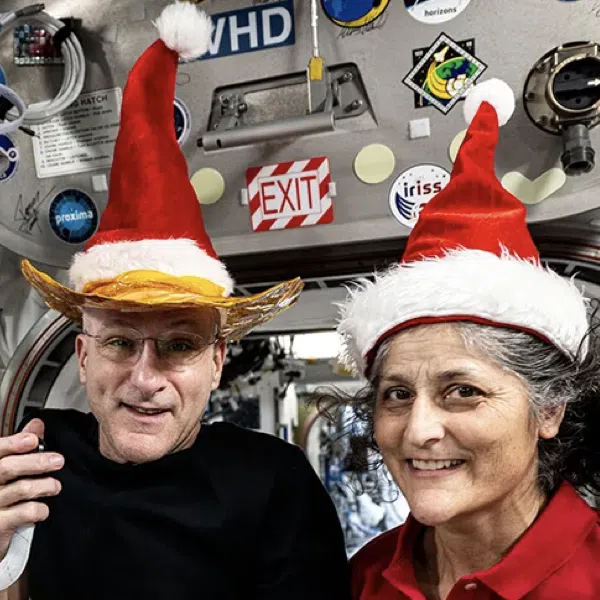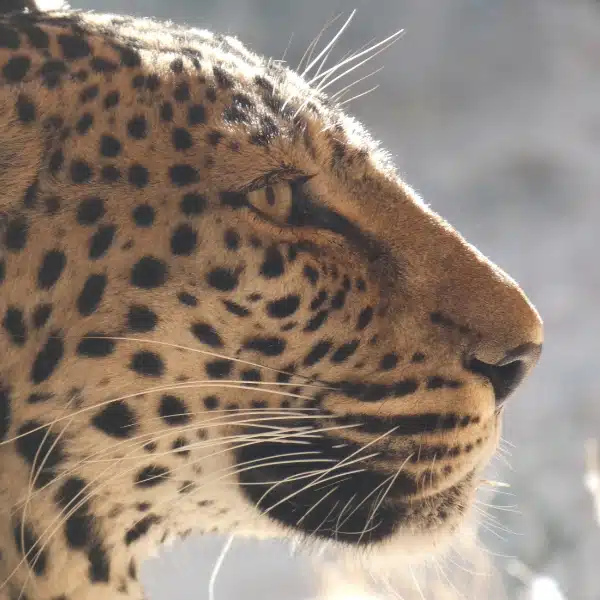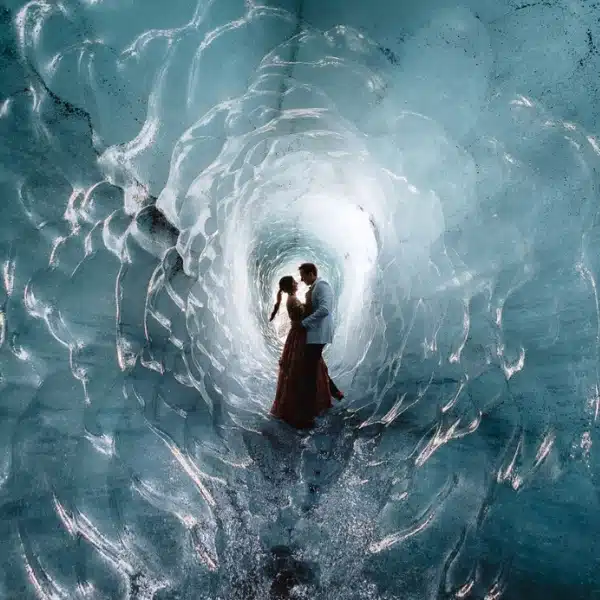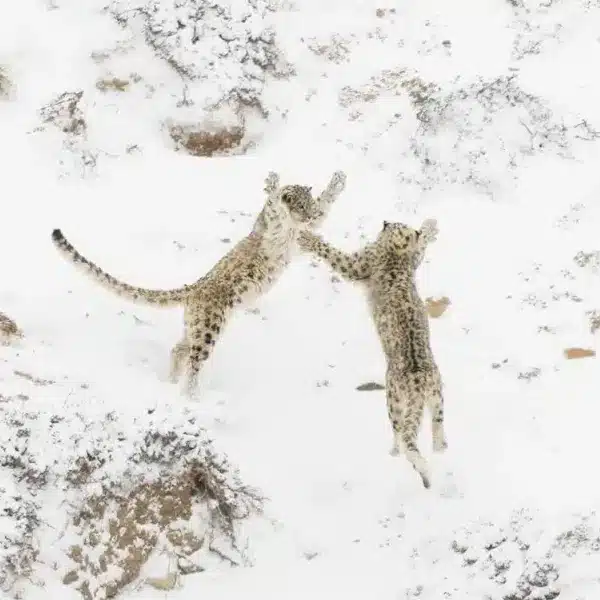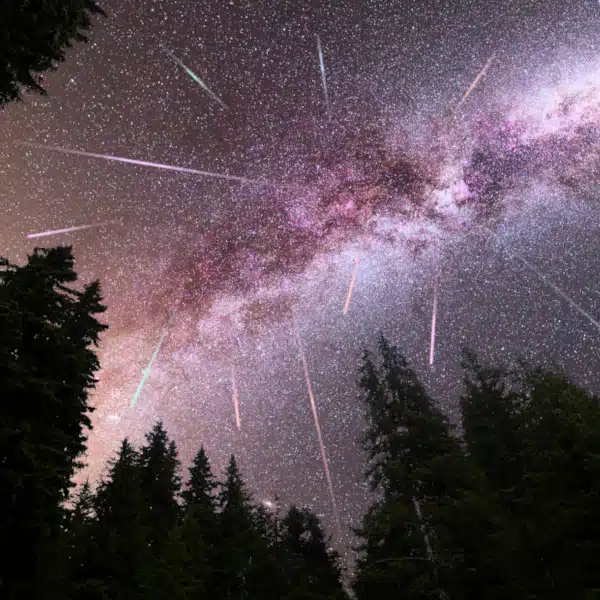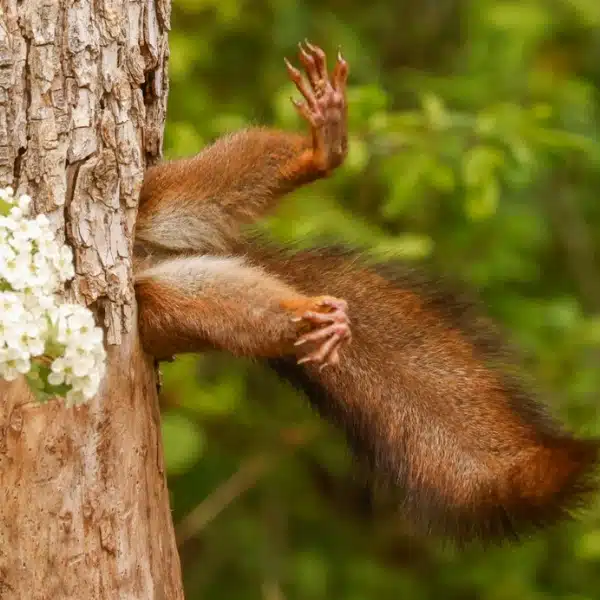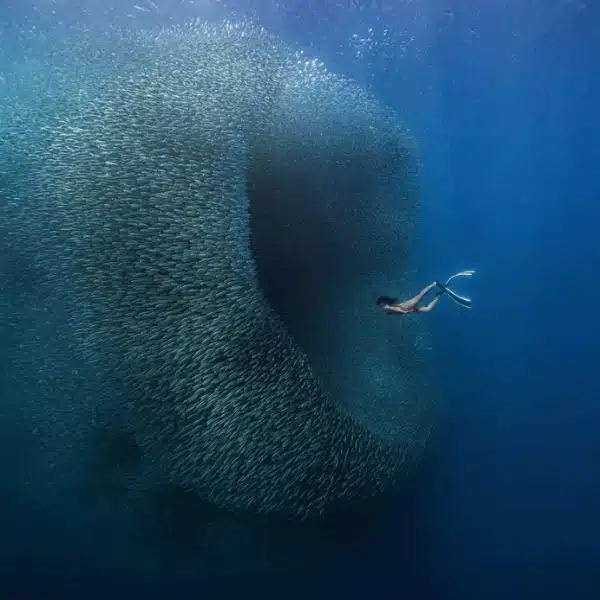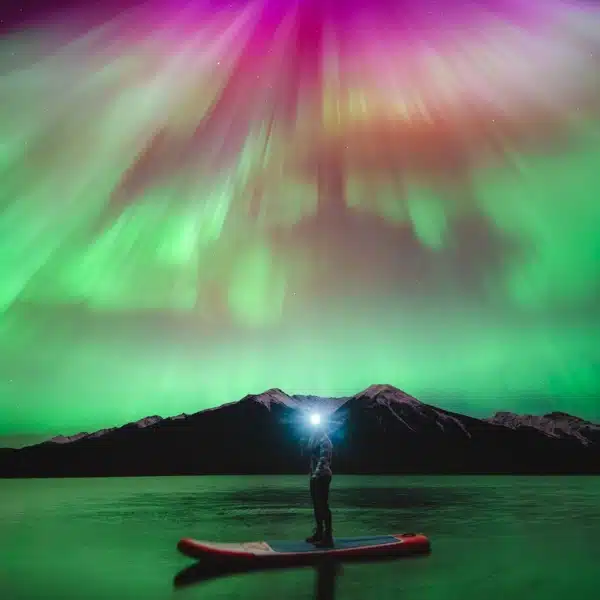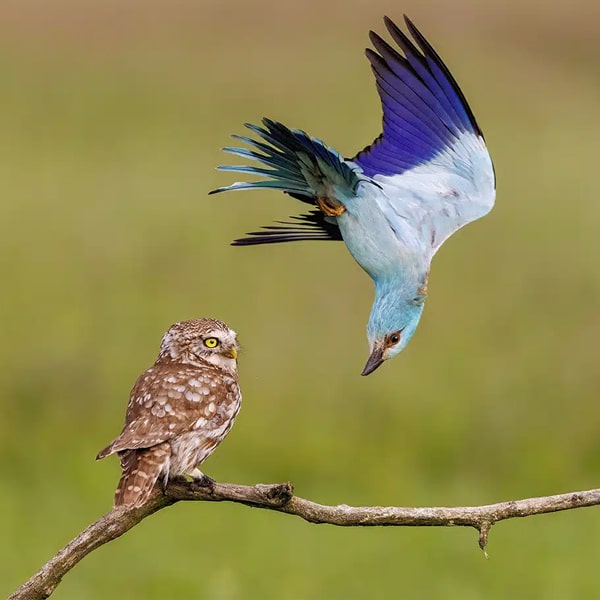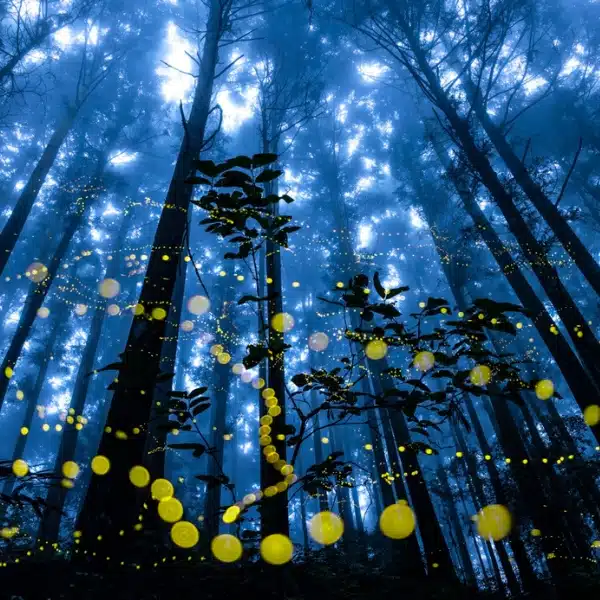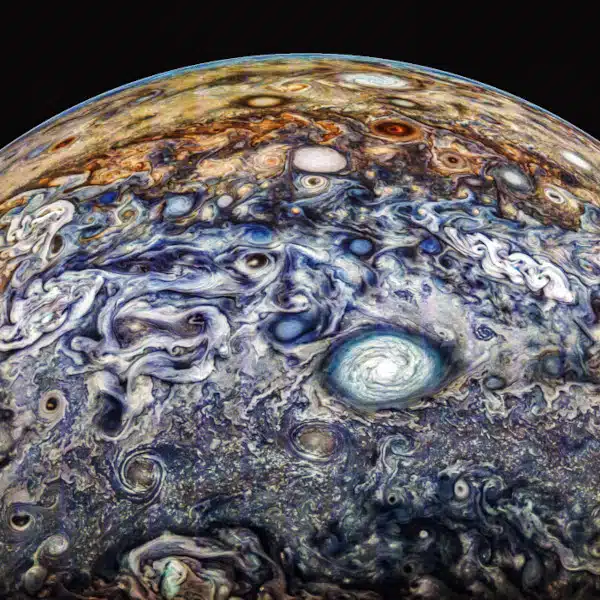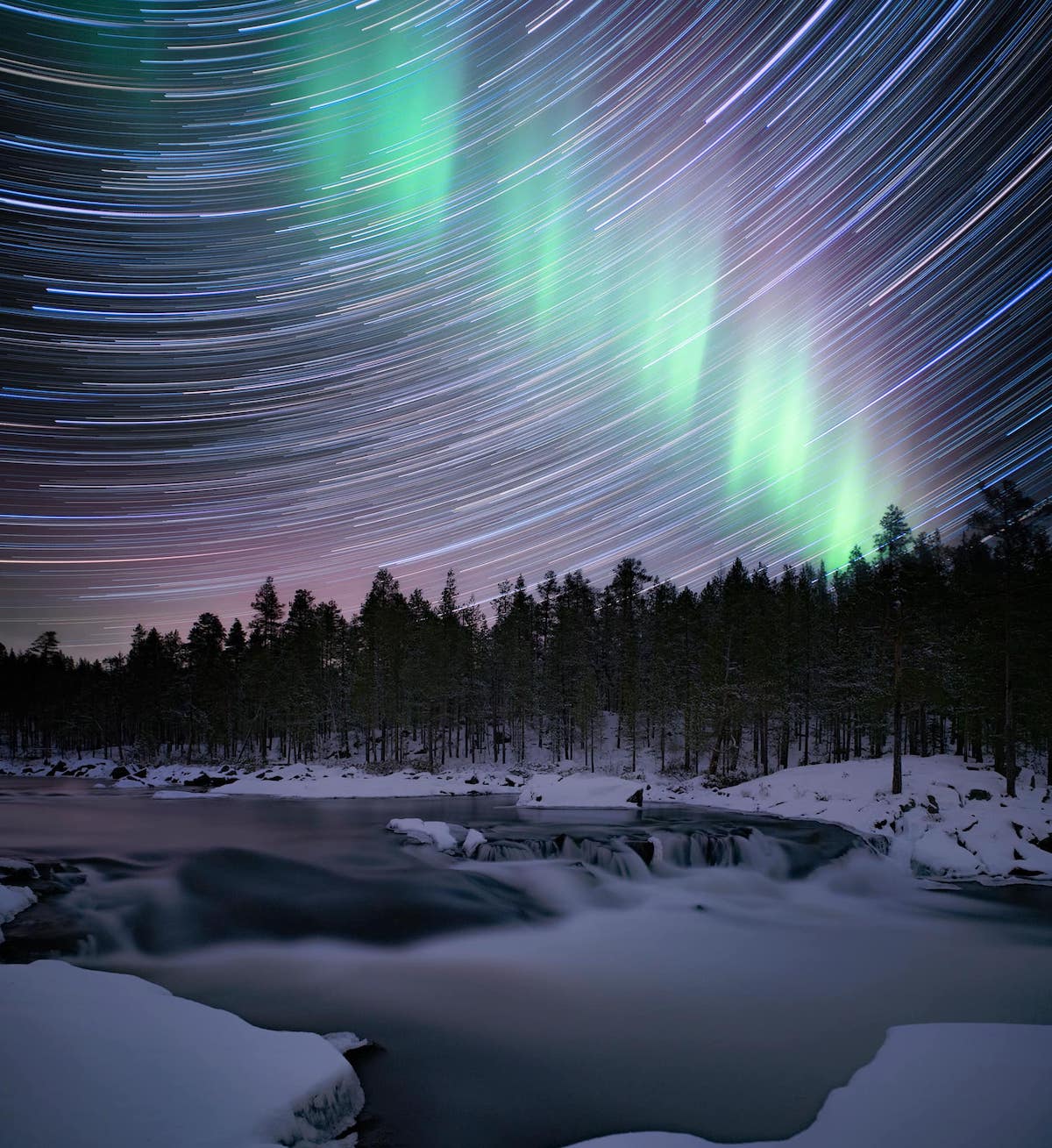
“Waterfall” by Anna Dobrovolskaya-Mints (Israel)
“This waterfall is in the middle of nowhere in Lapland, but the closest city is Arvidsjaur. It was very cold and while the photographer was waiting for the aurora to start, she put the camera outside to capture the star trails. The last few frames caught the start of Northern Lights and the photographer decided to merge all the frames and got this exceptional result.”
Exceptional images of the stars are on full display, as the Royal Observatory Greenwich has unveiled its shortlist for the thirteenth Astronomy Photographer of the Year contest. From the Northern Lights reflecting in the waters of remote Sweden to incredible views of spiral galaxies, the finalist images are an inspiring view into the world of astronomy.
While the overall winner, which will be announced in mid-September, will take home a £10,000 cash prize, there are many other categories that will also be rewarded. This includes Aurorae, People and Space, Our Sun, and Galaxies. There is also the Young Astronomy Photographer of the Year, which will be awarded to a talented photographer under the age of 16.
A quick scroll through some of the shortlist shows just how much there is to see and explore within our universe. Some images are clearly rooted on Earth, while others, like Damian Peach's portrait of Saturn, bring us far into the solar system. The finalists hail from around the globe and include familiar names like Andrew McCarthy, who is known for his impressive backyard astrophotography.
As we wait for the expert panel of judges to make the final judgement, take a look at some of our favorite photos from the Astronomy Photographer of the Year contest.

“Château de Chambord” by Benjamin Barakat (UK)
“This magnificent château in Chambord, Centre-Val de Loire, France was an amazing location chosen by the photographer’s best friend and mentor Ralf Rohner, but it proved to be a challenging one as the castle had intervals of illumination with a minute’s pause every 15 minutes. During the pauses, the photographer shot away trying to get as many images as possible and while processing it he had to try to mimic the reflection due to the time delay caused by the castle lights.”

“The Soul of Space (Close-up of the Soul Nebula)” by Kush Chandaria (UK), aged 13
“The Soul Nebula is one of those incredible targets that no matter where you point your telescope, there are always some incredible structures and details to be uncovered. This was the case with this image. With 14 hours of exposure, faint details and structures deep within the nebula began to emerge. The photographer chose to use narrowband filters to image this target and created a Hubble Palette composite.”
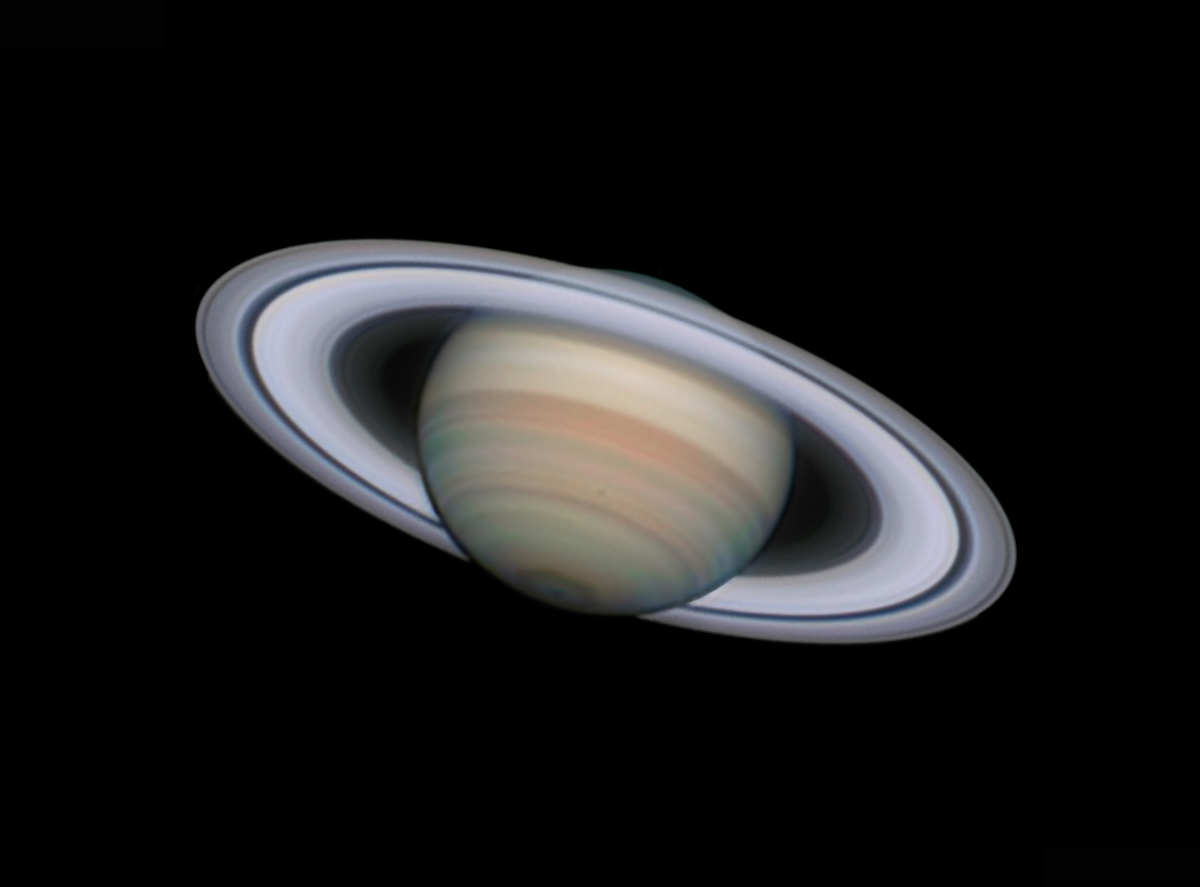
“Saturn at its Best” by Damian Peach (UK)
“In this image, Saturn is shown near its best for 2020, displaying a wealth of details across the globe and ring system. The famous polar hexagon can be seen around the pole at bottom, while many other belts and zones are seen across the planet. The famous Cassini and Encke divisions dominate the view of the rings.”
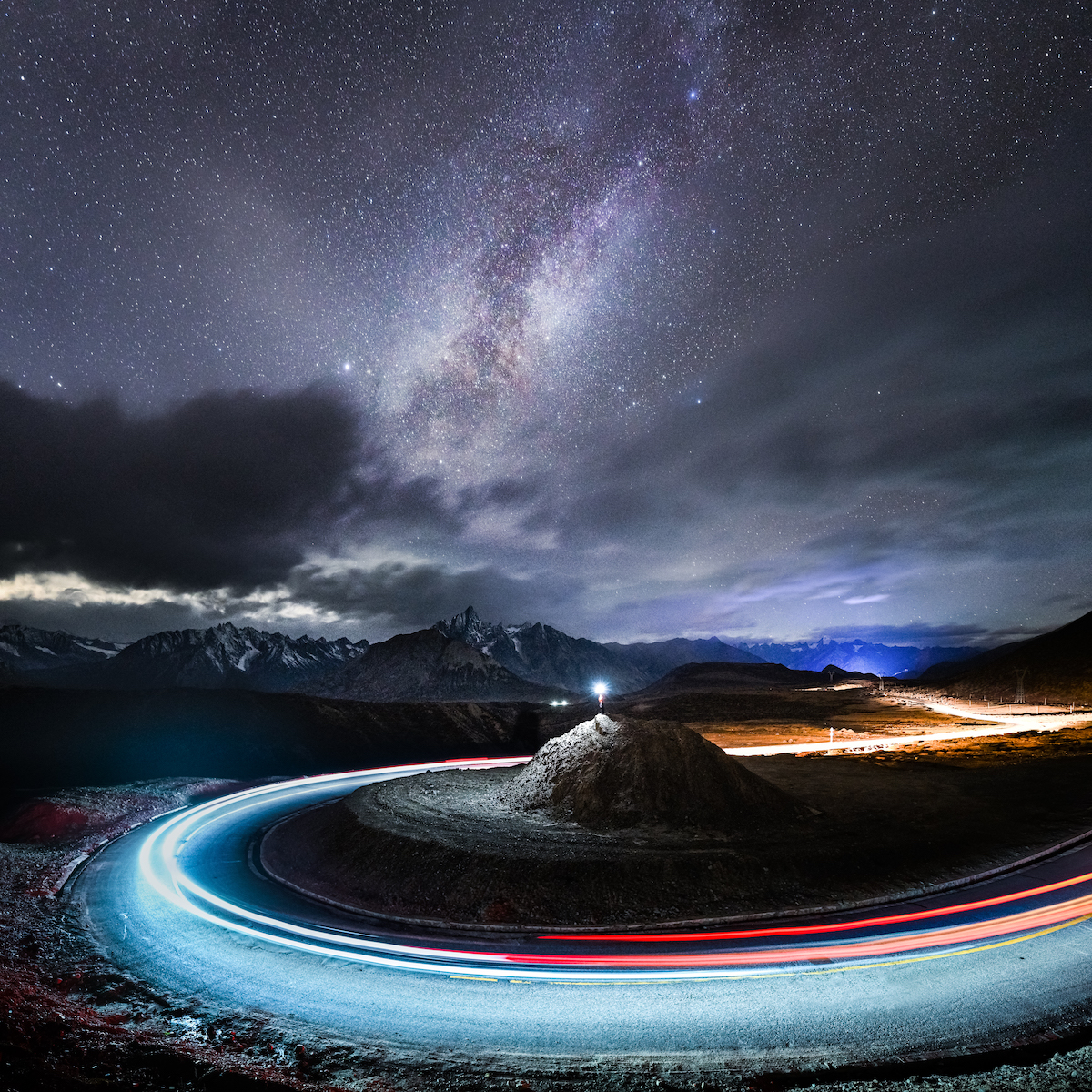
“Star Watcher” by Yang Sutie (China)
“As the photographer was driving on the mountain road late at night and turned the corner, he saw a mound on the right side of the road. The mountains lined up and the Milky Way was lined-up in front of the photographer, so he stopped and climbed up the side of the road, set the camera to shoot automatically, and then drove back and forth in this curve. Then he climbed up the hillside and integrated himself into the picture.”
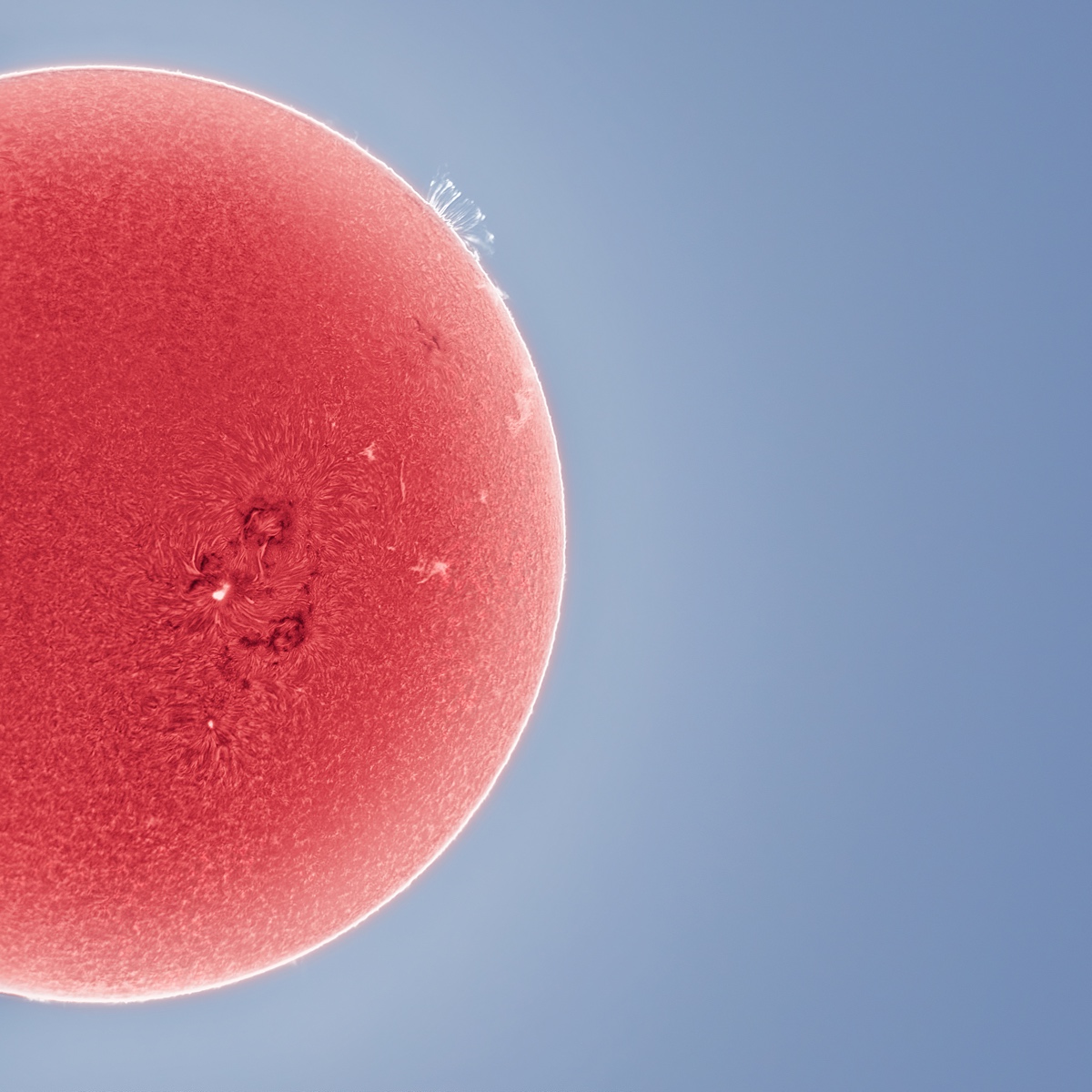
“The Magnetic Field of our Active Sun” by Andrew McCarthy (USA)
“This image shows how the magnetic field of the Sun pulls up portions of the chromosphere following a large solar flare, with the magnetic field lines on crystal clear display along the limb in hydrogen-alpha light. This also happened while a particularly large active region was along the face of the solar disc. This was captured in black and white and processed partially inverted to highlight the contrast on the surface as well as the atmospheric features on the limb, presented in false color for the aesthetic. This was one of the most interesting features on the Sun in all of 2020 and represents the first major activity since the start of the new solar cycle. The photographer is pleased with the way the processing shows the nature of the Sun in a naturally blue sky while preserving close to the proper hydrogen-alpha tones.”

“NGC 2024 – Flame Nebula” by Steven Mohr (Australia)
“The Flame Nebula, designated as NGC 2024 and Sh2-277, is an emission nebula in the constellation Orion, lying some 900 to 1,500 light-years away from Earth. The bright star Alnitak (just outside the field of view at the top of this image), the easternmost star in the Belt of Orion, shines energetic ultraviolet light into the Flame and this knocks electrons away from the great clouds of hydrogen gas that reside there. Much of the glow results when the electrons and ionized hydrogen recombine. Additional dark gas and dust lies in front of the bright part of the nebula, and this is what causes the dark network that appears in the centre of the glowing gas. The Flame Nebula is part of the Orion Molecular Cloud Complex, a star-forming region that includes the famous Horsehead Nebula.”

“Pleiades Sisters” by Jashanpreet Singh Dingra (India), aged 14
“This is an outstanding image of shining stars over the photographer’s region in winter. The Pleiades, also known as the Seven Sisters and Messier 45, is an open star cluster containing middle-aged, hot B-type stars in the north-west of the constellation Taurus. It is the nearest star cluster and Messier object to Earth and it is the cluster most obvious to the naked eye in the night sky. The data of this image was processed in Deep Sky Stacker, Photoshop CC 17 and Gimps.”
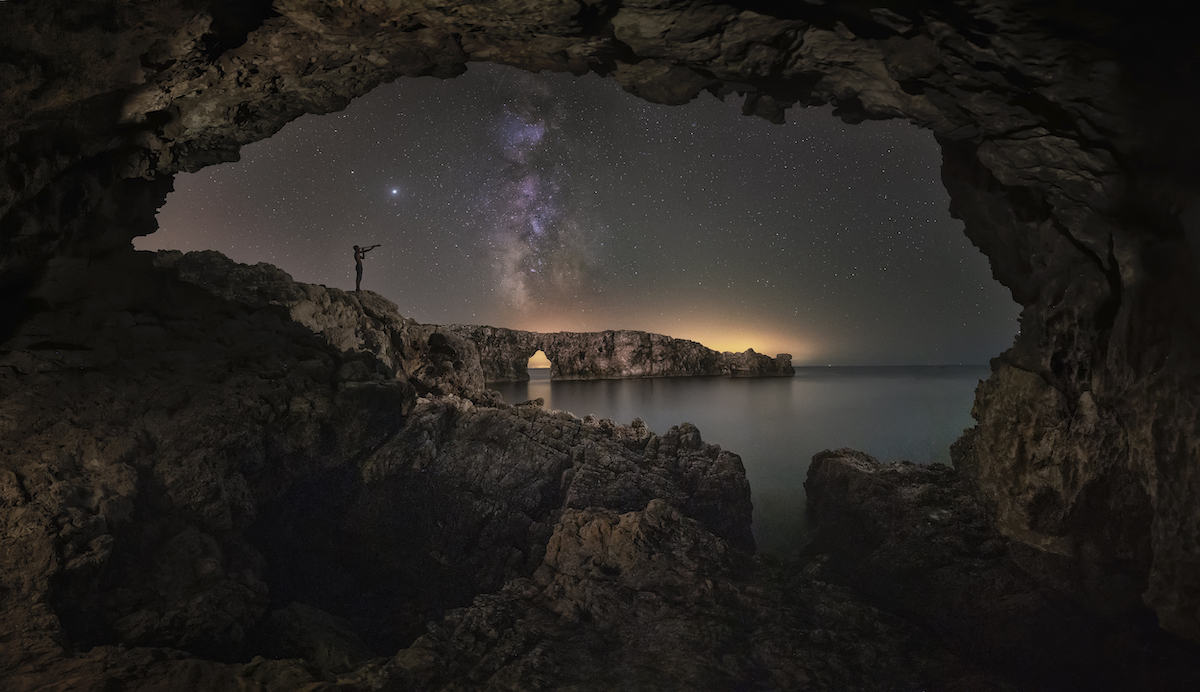
“The Star Observer” by Antoni Cladera Barceló (Spain).
“Menorca was declared a Biosphere Reserve by UNESCO in 1993 and credited as a Starlight Reserve in 2019. The photographer captured this image at this natural stone bridge shaped by water erosion. A watchman stands vigilant under the stars as the Milky Way is vertical above the natural arch. To add a soft and warm tone to the arch, the photographer used the light pollution from Mallorca, the neighboring island. The photographer wanted to humanize the landscape and incorporate the human element in the composition to prove that we are just nature’s guests.”

“The Milky Way on the Ancient Village” by Zhang Xiao (China).
“Hongcun, an ancient village at the foot of Huangshan Mountain in China, has a history of more than 900 years and in 2000 it became a UNESCO World Heritage Site. Its existing buildings have the unique characteristics of Hui Style Architecture from the Ming and Qing Dynasties. A galaxy of stars fell on the famous Yuezhao Lake surrounded by ancient buildings. This photo was taken after 1a.m., the streetlights in the village had gone out, and no one was around.”
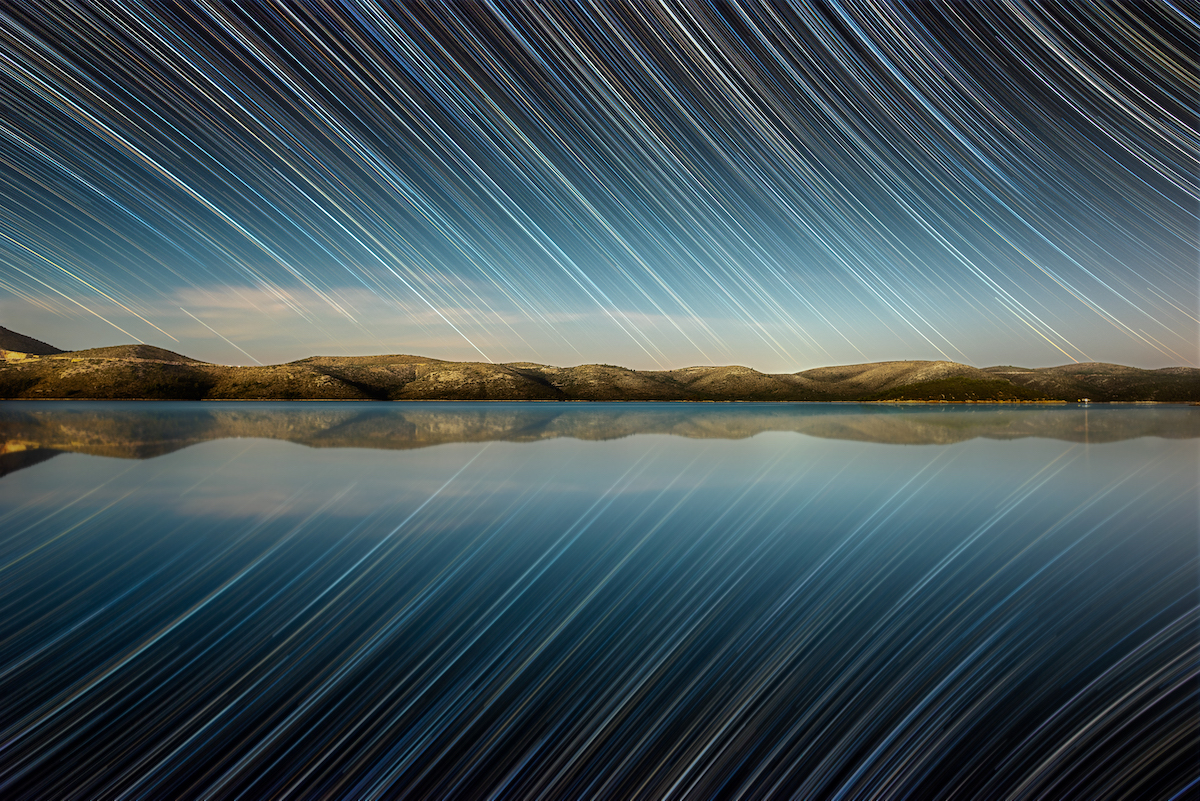
“Dugi Otok – Variant A” by Ivan Vucetic (Croatia)
“The photograph shows a captivating star trail over Dugi Otok in Croatia and the extraordinary relationship between our Planet and the Universe in a way that the human eye cannot perceive it. The photographer intended to capture the reflection of the stars on the water together with the sky, however during the long exposure time that was necessary for star trails the wind increased and seeing conditions were not favorable enough for a clear reflection of the stars. The photographer had to use the stars from the sky in post-processing to achieve the final result.”
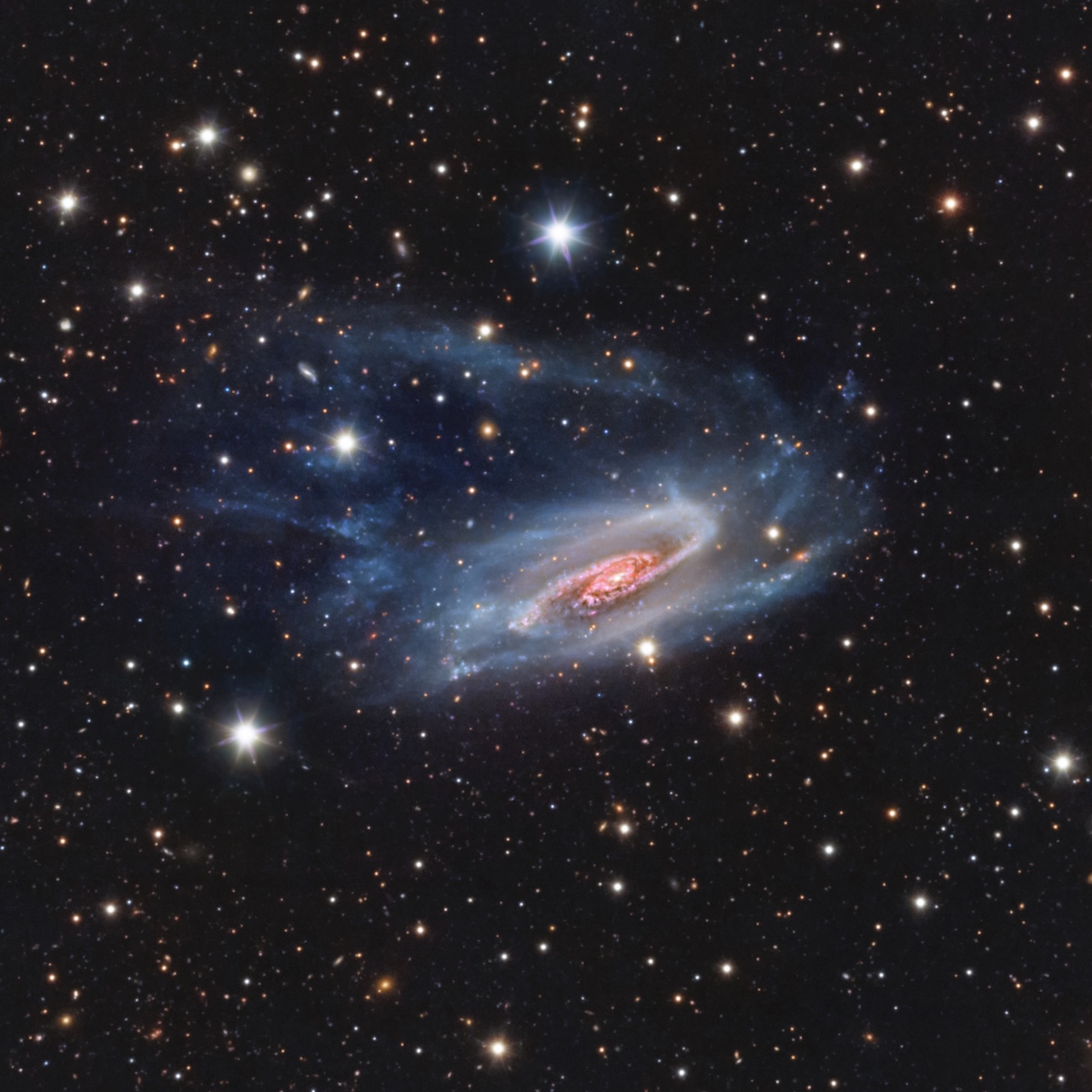
“NGC 3981” by Bernard Miller (USA)
“This is an image of NGC 3981. It is a spiral galaxy about 65 million light years away in the constellation Crater. Its windswept look is due to its outer arms being stripped away by an interaction with another galaxy. The galaxy is part of the NGC 4038 group, which also contains the well-known interacting Antennae Galaxies. This group is part of the larger Crater Cloud, which is itself a smaller component of the Virgo Supercluster.”
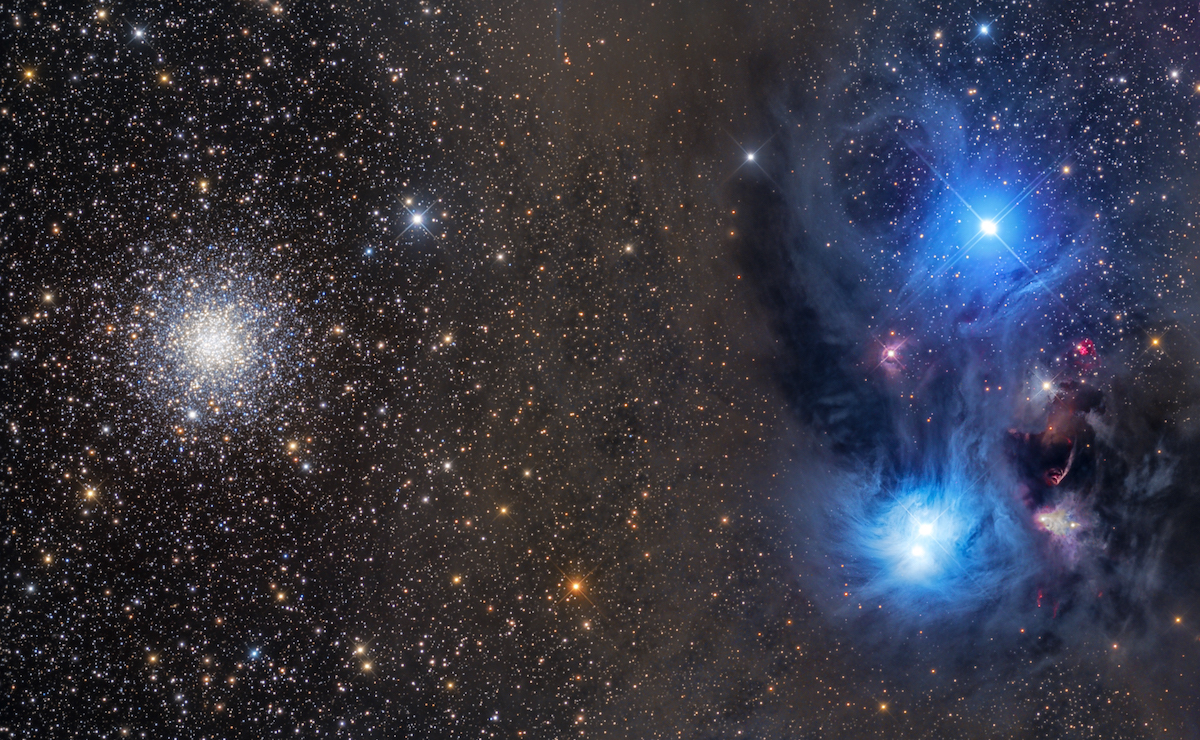
“NGC 2024 – Flame Nebula” by Steven Mohr (Australia)
“The Flame Nebula, designated as NGC 2024 and Sh2-277, is an emission nebula in the constellation Orion, lying some 900 to 1,500 light-years away from Earth. The bright star Alnitak (just outside the field of view at the top of this image), the easternmost star in the Belt of Orion, shines energetic ultraviolet light into the Flame and this knocks electrons away from the great clouds of hydrogen gas that reside there. Much of the glow results when the electrons and ionized hydrogen recombine. Additional dark gas and dust lies in front of the bright part of the nebula, and this is what causes the dark network that appears in the centre of the glowing gas. The Flame Nebula is part of the Orion Molecular Cloud Complex, a star-forming region that includes the famous Horsehead Nebula.”
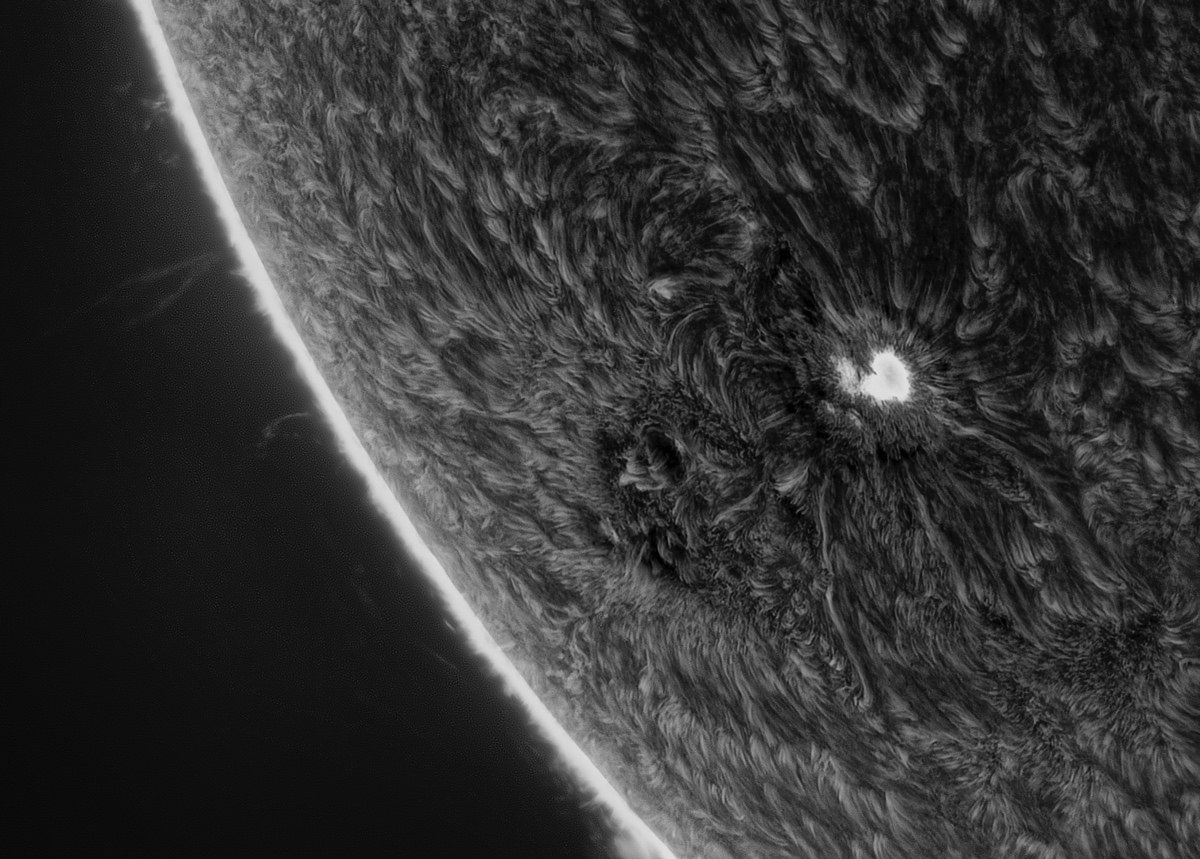
“Sunspot Looking out into Space” by Siu Fone Tang (USA)
“This image shows a close-up of a sunspot and the plasma as it flickers and follows the magnetic lines generated by the Sun. The photo depicts what is called the chromosphere, this is imaged using a hydrogen-alpha filter. The photo is made up of multiple frames that are stacked together and then later enhanced using Photoshop. It is an inverted view which creates more contrast.”

“Sunrise of the Magic City” by Jiajun Hua (China)
“Shanghai is one of the most economically developed cities in China. The photo is taken 16 kilometers away from Lujiazui financial district. Every year there are only a few weeks when photographers can capture the scene of the Sun rising the Central Business District (CBD). The photographer waited for a few days and finally witnessed the Sun rising from the most prosperous area of Shanghai on a heavily polluted morning. The photo is composed of four different exposures from the same perspective, recording the process of the Sun rising.”

“Iceland Vortex” by Larryn Rae (New Zealand)
“This is a 250 panorama of the Aurora Borealis in Iceland. The photographer came across this estuary that reflected the sky perfectly on a well below freezing winters night, and captured the panorama first, and then took a shot of himself out on the ice. For the photographer this is one of the most amazing aurora images that he has ever captured, and it sums up an awe-inspiring trip to Iceland in wintertime that also emphasized the feeling of being just a tiny part of the planet’s existence in the face of a very powerful natural environment. The panorama is comprised of twenty images, two rows of ten, captured on a Canon 5DMk3 and Canon 16-35mm.”











































































